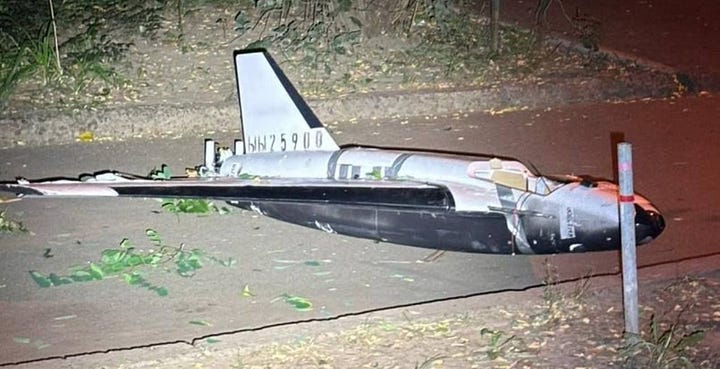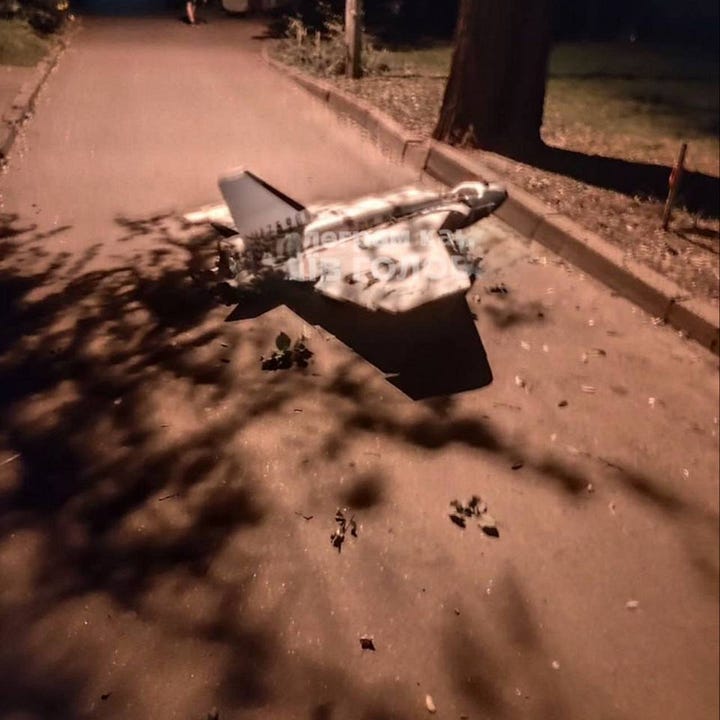Videos Indicate Regular Ukrainian Interception of Russian Decoy Drones Using "FPV" Interceptor Multirotor Drones
🇷🇺 🇺🇦
Note: The following text was originally posted on my X/Twitter account.
Ukraine is regularly intercepting Russian Gerbera decoy drones with armed multirotor drones-turned-anti-aircraft munitions. The Gerbera appears to be primarily employed in an unarmed configuration but can be equipped with a small warhead of up to ~3 kilograms in weight—the Gerbera is a much smaller and lighter (lower payload) design than the Shahed-136/Geran-2/Garpiya strike drones alongside which it is launched with the aim of saturating Ukraine's air defences. As this and other video compilations of such interception attempts show, Russia is able to effectively employ inexpensive and plentiful Gerbera decoy drones—among others—to tie up Ukrainian air defences and, in so doing, create openings for Shahed-136/Geran-2/Garpiya strike drones to penetrate Ukraine's air defences and strike their intended targets.
While the ratio of armed:unarmed Gerbera decoy drones is not public knowledge, it is important to recognize that Russia faces a structural incentive to place even a token warhead on the Gerbera as that is the primary way to induce the interception of the Gerbera decoy drones by Ukrainian air defences. Although the use of camera-equipped armed multirotor drones-turned surface-to-air interceptors allows Ukrainian air defence personnel to acquire a positive identification of the object they are targeting—consider the very high definition feed that is possible when operating these multirotor drones in rear areas that are largely unaffected by electronic warfare in the relevant frequency bands—the possibility that a Gerbera is armed incentivizes interception attempts. As I noted in a previous post, this approach to air defence is very manpower-intensive, even if the individual uncrewed aircraft-turned-munitions—the "cost per shot"—are quite inexpensive. Note the use of two armed multirotor drones-turned-interceptors—each of which has its own remote human operator/pilot—to intercept a single Gerbera at 00:54.
It should also be noted that Ukrainian air defences have another structural incentive to intercept as many Gerbera and other decoy drones whenever and wherever possible—and ideally as early as possible: doing so makes the job of air defence personnel in other sectors easier as they will no longer have to filter between possibly unarmed decoy drones and armed strike drones.
Related: a Gerbera decoy drone that recently crashed in the Kyiv area. The Gerbera's airframe is made of foam and plywood. When launched in an unarmed configuration and when out of fuel, gravity will result in it crashing into the ground as a more or less inert projectile. Should the Gerbera decoy drone be armed—with a rather token warhead—and equipped with a suitable fuse, an armed Gebera decoy drone will detonate on impact with the ground. While the destructive radius of a more or less randomly falling munition equipped with a 1-3 kilogram warhead is very limited, Ukraine's air defences appear to be unwilling to take the risk.



